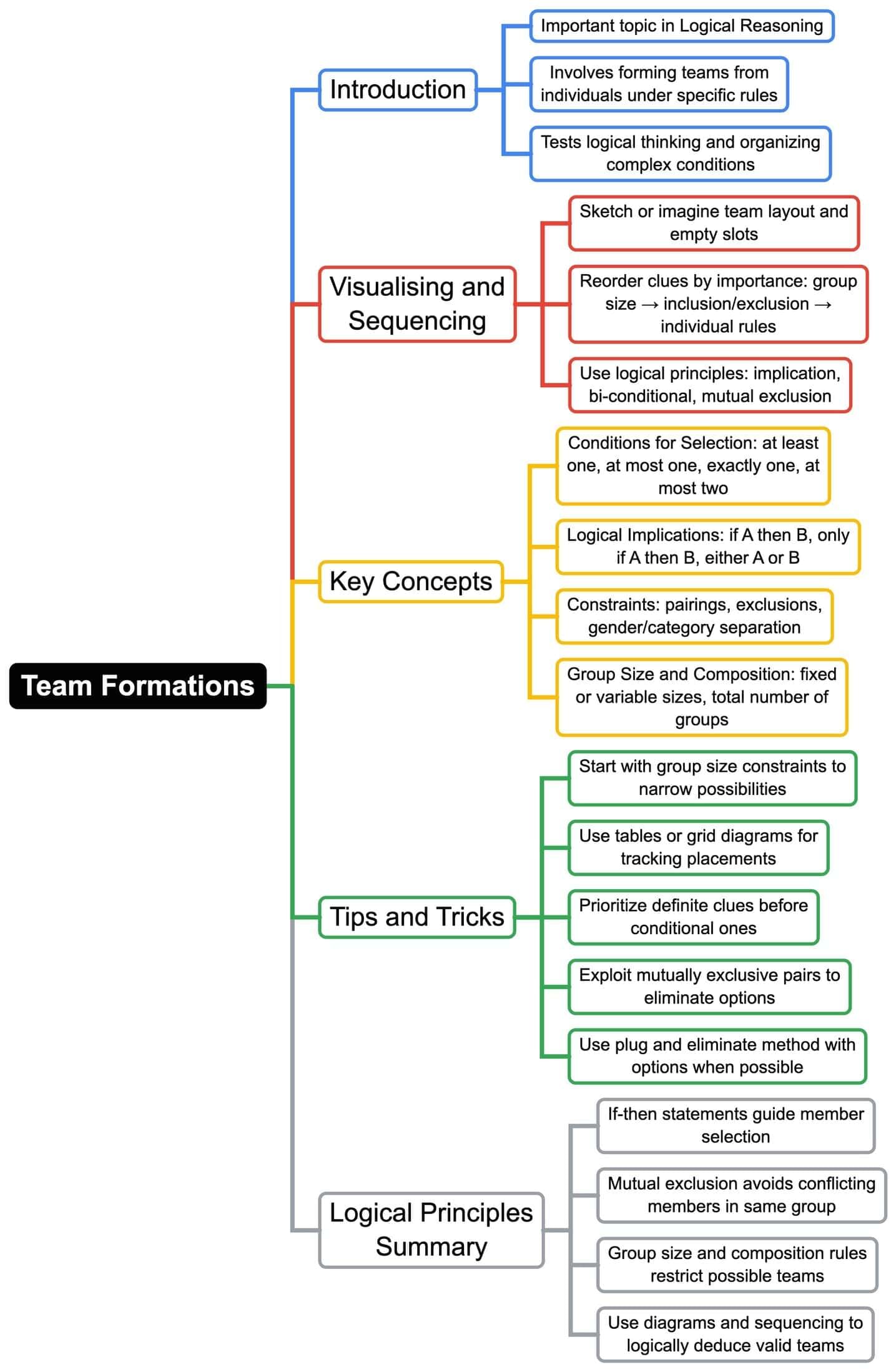CAT Exam > CAT Notes > Logical Reasoning (LR) and Data Interpretation (DI) > Mind Map: Team Formations
Mind Map: Team Formations | Logical Reasoning (LR) and Data Interpretation (DI) - CAT PDF Download

The document Mind Map: Team Formations | Logical Reasoning (LR) and Data Interpretation (DI) - CAT is a part of the CAT Course Logical Reasoning (LR) and Data Interpretation (DI).
All you need of CAT at this link: CAT
|
77 videos|180 docs|96 tests
|
FAQs on Mind Map: Team Formations - Logical Reasoning (LR) and Data Interpretation (DI) - CAT
| 1. What are the key characteristics of effective team formations in a collaborative environment? |  |
Ans. Effective team formations in a collaborative environment typically exhibit clear communication, defined roles, mutual respect among members, shared goals, and adaptability. These characteristics help ensure that team members can work together efficiently, resolve conflicts constructively, and leverage each other's strengths to achieve common objectives.
| 2. How can team formations impact the success of a project? |  |
Ans. Team formations significantly impact project success by influencing collaboration, creativity, and problem-solving capabilities. A well-structured team can harness diverse skills and perspectives, leading to innovative solutions and improved productivity. Conversely, poorly formed teams may struggle with misunderstandings, lack of coordination, and reduced morale, ultimately hindering project outcomes.
| 3. What are the common types of team formations used in organizations? |  |
Ans. Common types of team formations in organizations include functional teams (grouped by expertise), cross-functional teams (comprising members from different departments), self-managed teams (autonomous groups responsible for their work), and virtual teams (operating remotely through technology). Each type serves different purposes and can be effective based on the project needs and organizational goals.
| 4. What role does leadership play in effective team formations? |  |
Ans. Leadership plays a crucial role in effective team formations by providing direction, inspiration, and support. A good leader fosters an inclusive environment, encourages open communication, and provides the necessary resources for the team to succeed. Leadership also involves conflict resolution and ensuring that all team members feel valued and engaged in the decision-making process.
| 5. How can team diversity enhance team formations and outcomes? |  |
Ans. Team diversity enhances team formations and outcomes by bringing together individuals with varied backgrounds, experiences, and perspectives. This diversity can lead to more creative solutions, better decision-making, and increased adaptability. Teams that embrace diversity are often more resilient and capable of tackling complex challenges, as they can draw on a broader range of ideas and approaches.
Related Searches
















